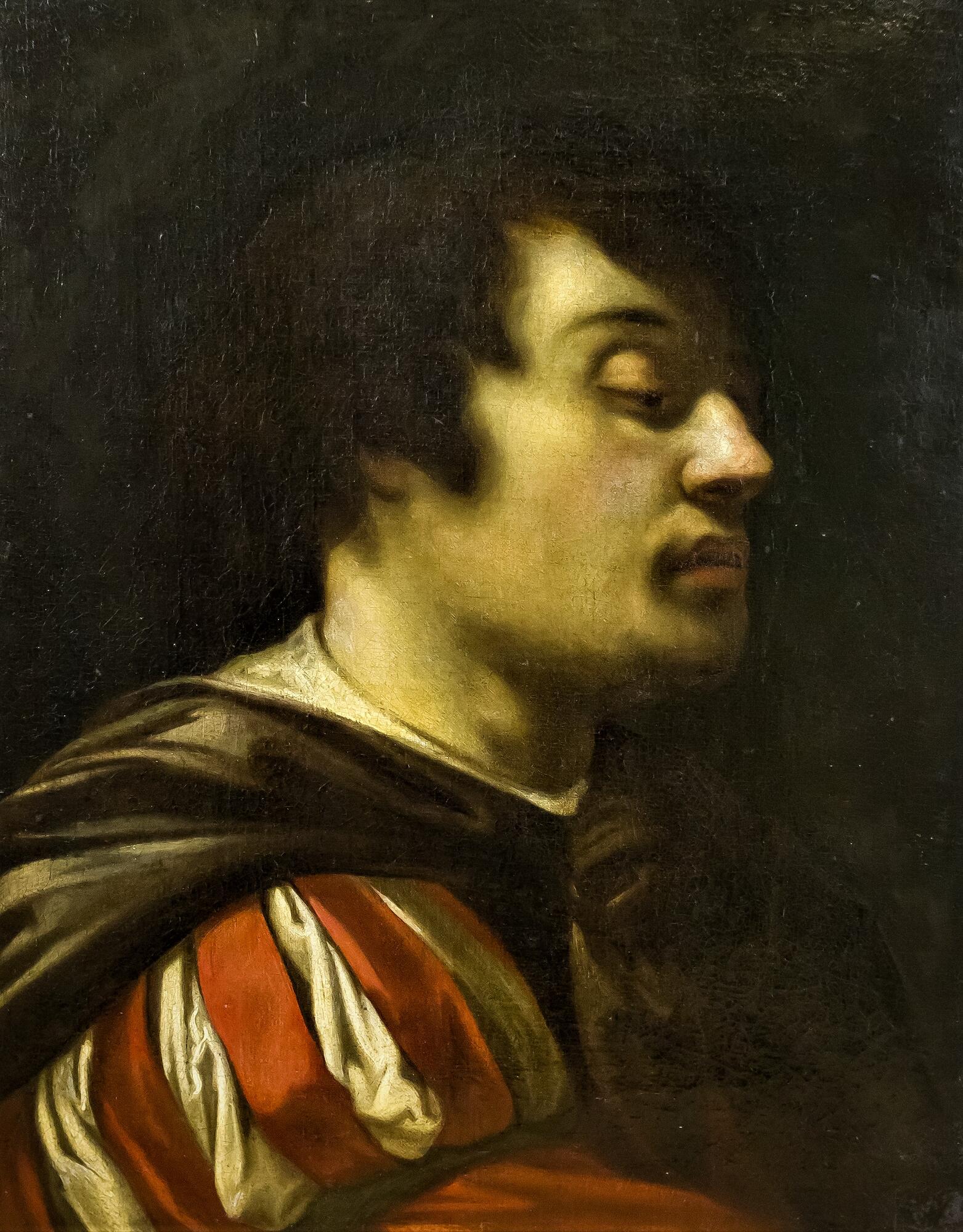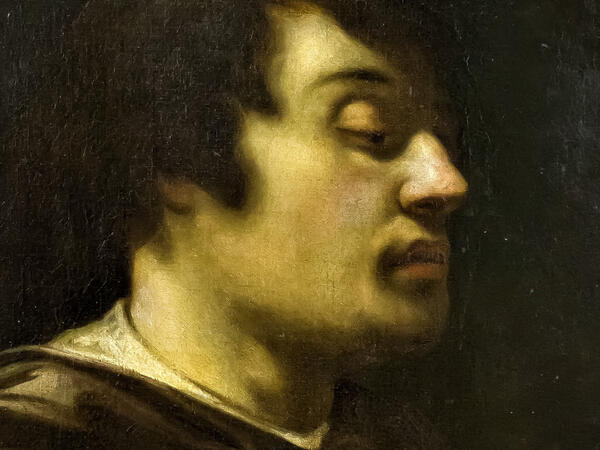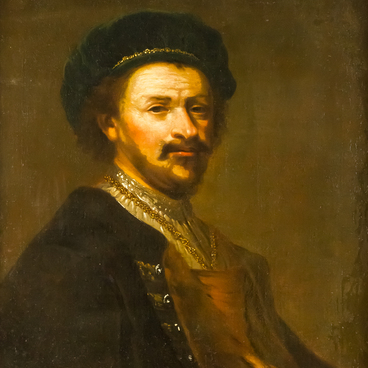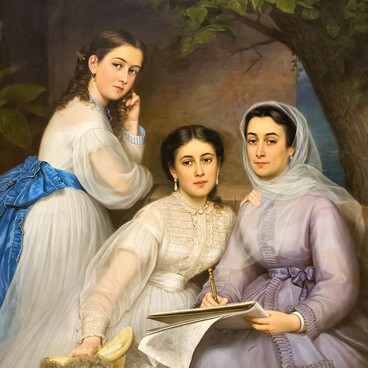‘Portrait of an Italian’, painted by Domenico Zampieri in the 17th century, is a good example of the chiaroscuro technique. The Italian ‘chiaroscuro’ literally means ‘light-dark.’ This word has many meanings, in art it means abrupt transitions from darkness to light, as if the scene is lit with a bright lantern. This technique was brought to everyone’s attention by Caravaggio, a painter who lived at the turn of the 17th century. His style was very distinctive and gained a lot of followers, which even inspired the term “Caravaggism”.
The use of chiaroscuro and the realistic manner of painting reflect the principles of Caravaggism. The model’s complexion is imperfect and somewhat dull. The artist used gloomy hues even for well illuminated parts, so it seems that the young man is in a poorly lit room. Perhaps this portrait served as a stepping stone to a more complex composition. This could explain the feeling of the young man’s attention being directed to something beyond the canvas — it is possible that the painter planned to depict him in a larger painting among other characters.
Domenico Zampieri was born in Bologna in Northern Italy. In his early years, he was influenced by Caravaggio, but later he was recognized as one of the most prominent representatives of the Bolognese school of painters — the school that developed a system of rules for creating an “ideal painting.” The Bolognese school was founded by the Carracci brothers. Domenico Zampieri was their student and chose the works of Raphael and Correggio as the perfect examples to learn from. He strove to surpass the imperfections of nature by developing a concept of ideal beauty.
Until the middle of the 19th century, Zampieri was considered one of the greatest painters in the history of Europe. The artist was referred to as the true heir of Raphael, poems were written about the lightness of his brush strokes, monarchs were in competition for acquiring his paintings. He created religious and mythological paintings and frescoes, as well as portraits and landscapes, working in Bologna, Rome and Naples.
“Portrait of an Italian” was donated to the museum from the collection of Andrey Likhachov, a great connoisseur of Western art.
The use of chiaroscuro and the realistic manner of painting reflect the principles of Caravaggism. The model’s complexion is imperfect and somewhat dull. The artist used gloomy hues even for well illuminated parts, so it seems that the young man is in a poorly lit room. Perhaps this portrait served as a stepping stone to a more complex composition. This could explain the feeling of the young man’s attention being directed to something beyond the canvas — it is possible that the painter planned to depict him in a larger painting among other characters.
Domenico Zampieri was born in Bologna in Northern Italy. In his early years, he was influenced by Caravaggio, but later he was recognized as one of the most prominent representatives of the Bolognese school of painters — the school that developed a system of rules for creating an “ideal painting.” The Bolognese school was founded by the Carracci brothers. Domenico Zampieri was their student and chose the works of Raphael and Correggio as the perfect examples to learn from. He strove to surpass the imperfections of nature by developing a concept of ideal beauty.
Until the middle of the 19th century, Zampieri was considered one of the greatest painters in the history of Europe. The artist was referred to as the true heir of Raphael, poems were written about the lightness of his brush strokes, monarchs were in competition for acquiring his paintings. He created religious and mythological paintings and frescoes, as well as portraits and landscapes, working in Bologna, Rome and Naples.
“Portrait of an Italian” was donated to the museum from the collection of Andrey Likhachov, a great connoisseur of Western art.



